Philatelic ramblings
A retired professor published a book this year about currency notes and coins used in Singapore.
Retired professor Dr Tan Wee Kiat, 75, and retired teacher, Pearly Lim, 72, have come together to publish a book on currency notes and coins used in Singapore. Called “Philatelic Rambling in Singapore Money: From 1953 Queen $1 Note to 2013 Merlion $1 Coin”, Dr Lim hopes the book will “encourage fellow Singaporeans to develop a deeper awareness and appreciation of Singapore history and heritage”.
Here are four interesting facts from his book, which Dr Tan shared:
1) Same crests – The Sarawak and Sabah 50-cent stamps, below, don the same crests at the bottom left side, which is in error. These stamps were issued in September 2007.
2) Sound mind & body – The saying “a sound mind in a sound body” is a reminder to stay healthy by being physically active. The back of the Portrait $10 note, below, reflects this theme through the pictures of the five popular sports activities – jogging, tennis, soccer, swimming and sailing.
These land and water sports convey the sense of energy and ruggedness symbolising sporting activities in general. Of course, there are many more sporting activities than those. The Singapore $1 stamp issued in August 1981 illustrates a wider range of sports and games available.
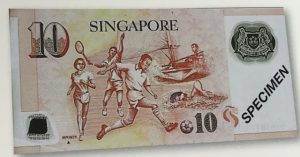
The “sound mind, sound body” theme reflected in the pictures of the sports activities on the Portrait series $10 note (above).
3) Lucky number 8 – An urban myth is a popular story connected with an unusual event or occurrence. The story may have some truth. The urban myth about the Flora coin is rooted in the shape of the $1 coin. While the coin is circular like the other coins in the series (1-cent, 5-cent, 10-cent, 20-cent and 50-cent coins), its perimeter is also an eight-sided polygon. In the Chinese culture, the number “8” is considered to be a lucky number. Before you pooh-pooh this idea, consider the fact that the 2008 Olympics Opening Ceremony in Beijing, China was held on August 8, 2008 at 8.08pm.
Another example – when taking a walk in HDB estates, especially the older ones, you may come across a good-luck charm know as the ba-gua hanging above the main door of some flats. It has eight sides.
4) Happy face – The second urban myth connected to the Flora coins is about the Singapore crest. The version of the crest that appeared in coins issued between 1985 and 1992 differed from that issued from 1993 onwards. To illustrate this difference, take a closer look at the two Flora series $1 coins, below.
So what is the urban myth here? Imagine that the coins represented the outline of a face. Imagine too that the heads of the lion and tiger represented the eyes and the curvy “Majulah Singapura” banner represented the mouth, what facial expressions would the two coins convey?
To make things easier to visualise, look at the drawings beside the coins. The top coin and its corresponding sad facial expression (top right picture, below) communicated a sense of unhappiness. A sad face represented unhappy circumstances. Thus, the urban myth began that a senior Government official ordered that the design of the Singapore crest on coins be changed to one resembling a happy face. A happy face is reflective of good fortune. Singapore coins issued from 1993 onwards show this ‘happy face’ crest.
** Dr Tan’s book is being sold at the Singapore Philatelic Museum for S$18 and is also available at the public libraries.
(Photos are from the book and have been taken with permission.)


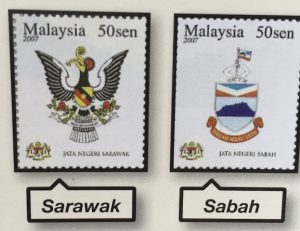
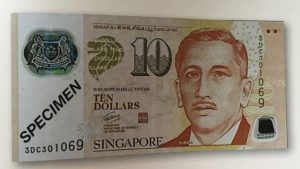
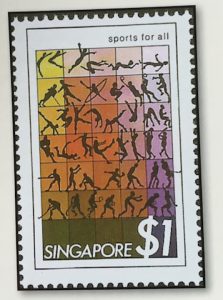

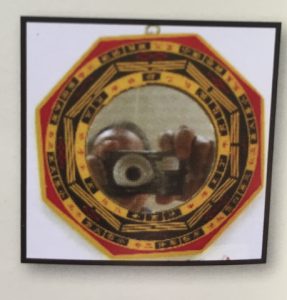

0 Comments